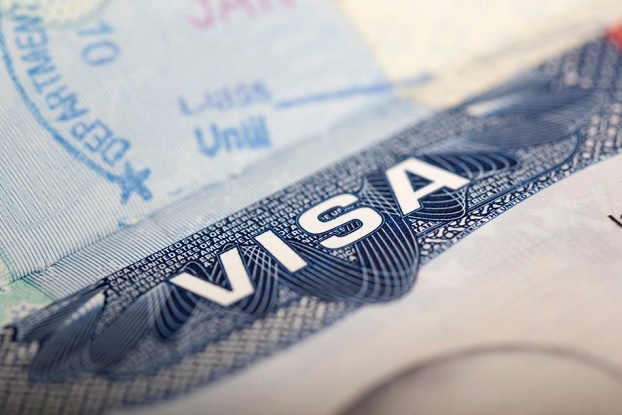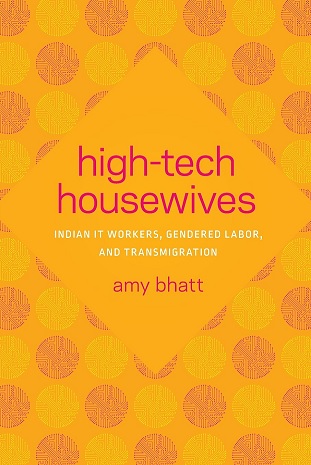
In 2011 Kavya had many life changes. She got married, she quit her job working at a large Indian-IT company, and she immigrated to the United States from India.
“It’s always a fantasy for everyone,” she says about living in the U.S. “In some part of their heart they want to be here. That’s the truth. The beauty of U.S, especially when you are here, is how strong the system is, the infrastructure. You fall in love with the country and how accepting it is.”
Kavya is one out of approximately 90,000 Indian women living in the U.S. whose lives are in a state of limbo after the Trump administration announced plans to rescind work authorization (EAD) for H-4 visa holders. On February 20, 2018 the Department of Homeland Security sent a proposed rule change to the Office of Management and Budget, an office within the White House, for review. A final rule is expected later this year.
By taking away H-4 visa holder’s ability to work, the federal government will strip away the ability for many Indian women to be financially independent from their spouses. This is especially harmful to women facing domestic abuse and it’s another policy change in line with the Trump administration’s ongoing anti-immigrant push.
Kavya has requested her name be changed out of fear it could affect her chances at a green card. She lives with her husband and her American-born 6-year-old son in a central Illinois town. I’ve known them for many years. My parents, who immigrated to the United States from India in the ’90s under the same visa program, have been close friends with their family since I was a child. While growing up we would visit each other’s homes for dinner and celebrate holidays together.
Kavya’s son has an untamable energy. He’s always moving with his limbs flailing about everywhere. He often reminds me of myself at that age. He struggles with Hindi and switches back and forth between his parents’ language and English. His hair flops around as he prances through the house. We also happen to share the same birthday, which we hope to one day celebrate together.
H-4 visas are available to the spouses of people on an H-1B visa, a type of visa that allows U.S. companies to temporarily employ foreign-workers in specialty occupations for jobs they were unable to find an American citizen to fill. The H-1B program was created through the passage of the 1990 Immigration Act at a time when software engineers and information technology professionals were needed to build the internet and other computer systems.
The proposed changes disproportionately affect Indian immigrants who make up the majority of H-1B and H-4 visa holders. Of the 365,682 H-1B visas issued in 2017, over 75.1 percent of them went to Indian nationals, according to a 2018 report by the United States Citizenship and Immigration Services (USCIS).

Bhatt also added that H1-B is different because it allowed people to bring spouses and dependents with them and “moves the onus away from family sponsorship to employer based.”
Kavya’s new husband was already living and working in the United States for several years under an H-1B visa before she arrived on an H-4 visa.
But in 2011, when Kavya came to the United States, H-4 visa holders were still prohibited from working.
“I wanted to go back to India. I was feeling so helpless,” she said. “I was so depressed….It’s not just IT, you cannot even work in Walmart. You cannot even bake cakes and sell it from home because it will be called illegal. You feel trapped actually. You feel like you don’t have an identity, especially for women who have had careers in India.”
The South Asian American Policy and Research Institute, an organization that is releasing a report this spring about the H-4 EAD (work authorization), found that many women who are unable to work feel social isolation and concerns around mental health and depression. “They lost a sense of independence and agency,” said Dhara Puvar, the executive director.
H-4 visa holders being economically dependent on their spouses creates additional problems for those experiencing domestic violence in their marriages. According to Bhatt, women on an H-4 visa who are experiencing domestic violence could potentially face deportation if they divorce their spouses. If they have children who are U.S. citizens, then the children would be given to the lawful visa holder. The few options for relief such as U-visas or work authorization requests are difficult to obtain and not everyone qualifies.
Luckily, in 2014 Kavya was able to find a job at an IT company who sponsored her for her own H-1B visa. She was happy to finally have a job and more to do with her time. It came with a sense of agency and pride.
A few years later in 2017 she went on a family trip to India with her son. “There was an urge inside of me to take him to India. I wanted him to meet his grandfather and my dad and other family,” she said.
When she was in India she had to go get her visa stamped. She was in the middle of that process when her employer was also happening to be going through a major loss.
“The CEO called me and said we are shutting down.” Kavya recalls. “Their lawyer withdrew my application because if they are closing down it was not a good idea for me to come back on their stamping…It could have been illegal.”
Kavya was dependent on her employer to file a visa extension, and unfortunately she was not going to be able to receive her green card anytime soon.
USCIS currently only issues green cards to a limit of 7 percent per country. Therefore, since most of the applicants are H-1B holders from India, the average wait time today for an Indian immigrant to receive a green card is 15-20 years.
Forced to endure a long wait-time to receive their green card, many Indian immigrants are dependent on their employer to apply for visa extension after extension in order to remain in the United States. This is bad news for immigrants who lose their jobs, as it puts their immigration status at risk. Such was the predicament that Kavya found herself in.
Unable to return to the United States on an H-1B visa, Kavya and her son remained in India for several months while they tried to figure out what to do. Eventually, Kavya was able to get back on an H-4 visa through her husband who was still in the U.S.
But a huge weight had lifted off Kavya. This time being on the H-4 visa would not be as horrible as it was in 2011. There would be no identity crisis because of a 2015 decision by the Obama administration to grant work authorization to H-4 visa holders. “EAD was a savior for me,” Kavya said.
She currently works in the IT department of a major hospital and enjoys her new job, but the future of the H-4 EAD does not bode well under the Trump administration.
In April 2017, Donald Trump signed the “Buy Amercan, Hire American” executive order, which encouraged the purchase of American-made goods and the hiring of American citizens before other nationalities. The executive order prompted all relevant government agencies to review the H-1B program and suggest any changes to meet the requirements of the executive order.
The executive order’s effects were quick.
According to a July 2018 report by the National Foundation For American Policy, in fiscal year 2017 there was a 41 percent increase in H-1B denials from quarter 3 to quarter 4.
On February 20, 2018 the Trump administration took one step closer to rescinding the H-4 EAD. The Department of Homeland Security sent a proposed rule to the White House’s Office of Management and Budget for review. The office will take one to three months to review the rule before publishing. Afterward there will be a public comment period before a final rule is announced.
This has women like Kavya worried.
“I don’t want to go through the same thing. I had to go to a doctor to share with my depression and identity crisis I was going through,” Kavya said. “That will be a nightmare. I have no answer. I will be completely helpless. I cannot imagine not working at all.”
For Kavya and her family, their future remains uncertain. They are unsure if Kavya will be able to work if the EAD is taken away. They also don’t know if their current visa, which will expire in May 2019, will be extended or not. Furthermore, given the massive green card backlog and associated wait time, they are unsure if and when they will receive a green card.
I thought about my parents who had came to the United States in the ’90s, at a time when H1-B and H-4 visa applications weren’t so high and a staunch anti-immigrant administration wasn’t in power. By the time I was Kavya’s son’s age my parents already had their green card. They were secure knowing they could make a life in this country and that myself and my siblings would grow up here.
One day Kavya asked her son to go do puja (prayer), but he didn’t want to. “I’m not Indian, I’m American,” she recalled him saying.
“As he said that I was thinking in my mind, ‘What if we have to leave?’”
***
Ankur Singh is a videographer, educator, and journalist. Find him on Twitter @ankrsingh and visit his website www.ankursinghdotcomwastaken.com.












